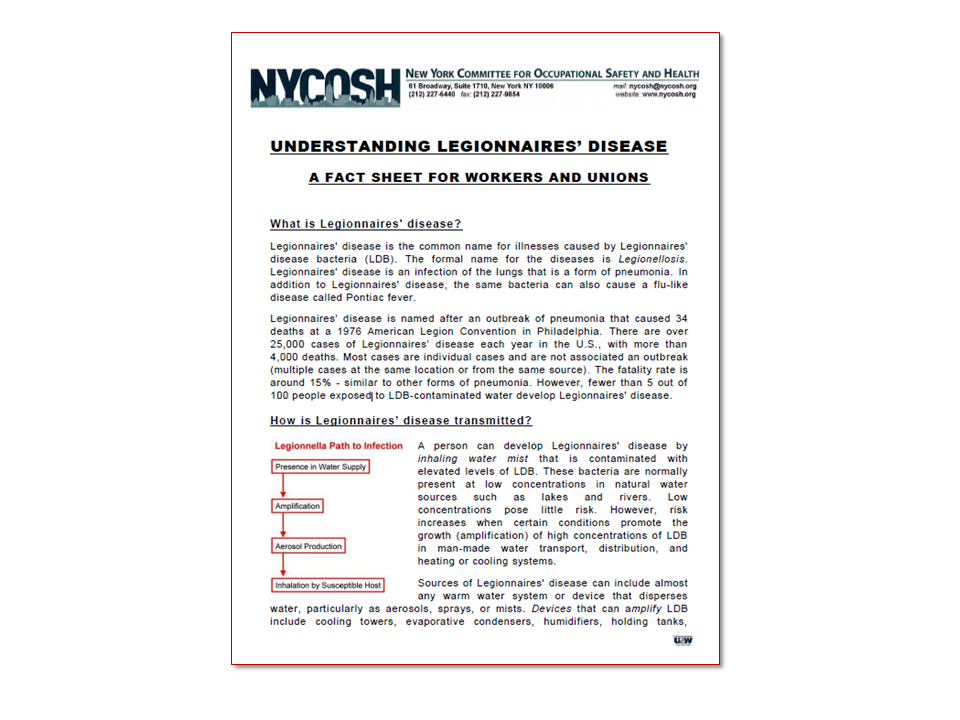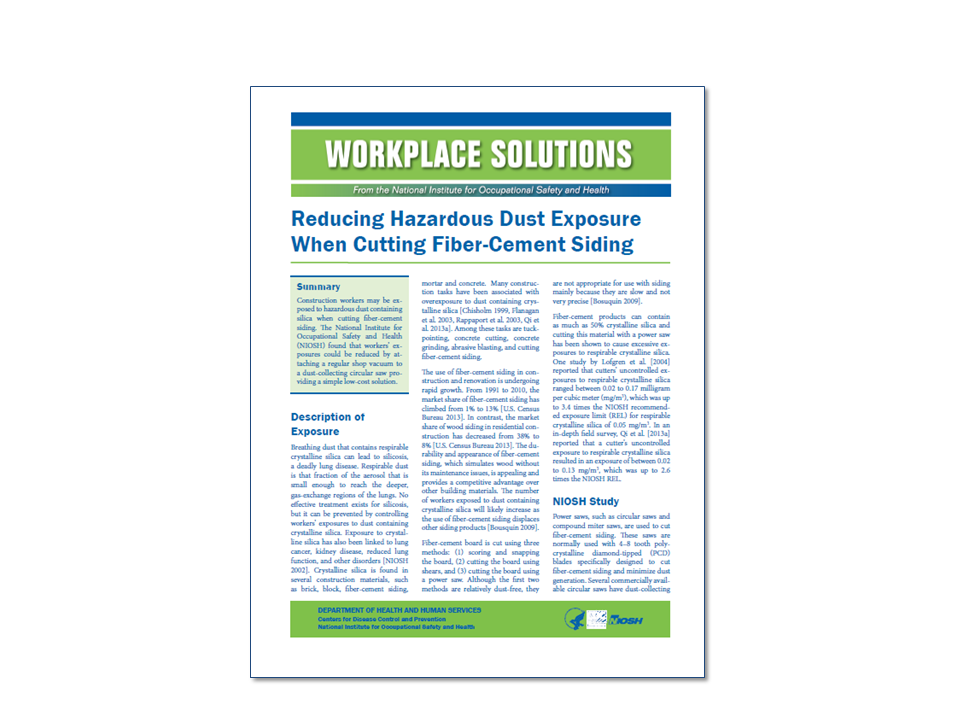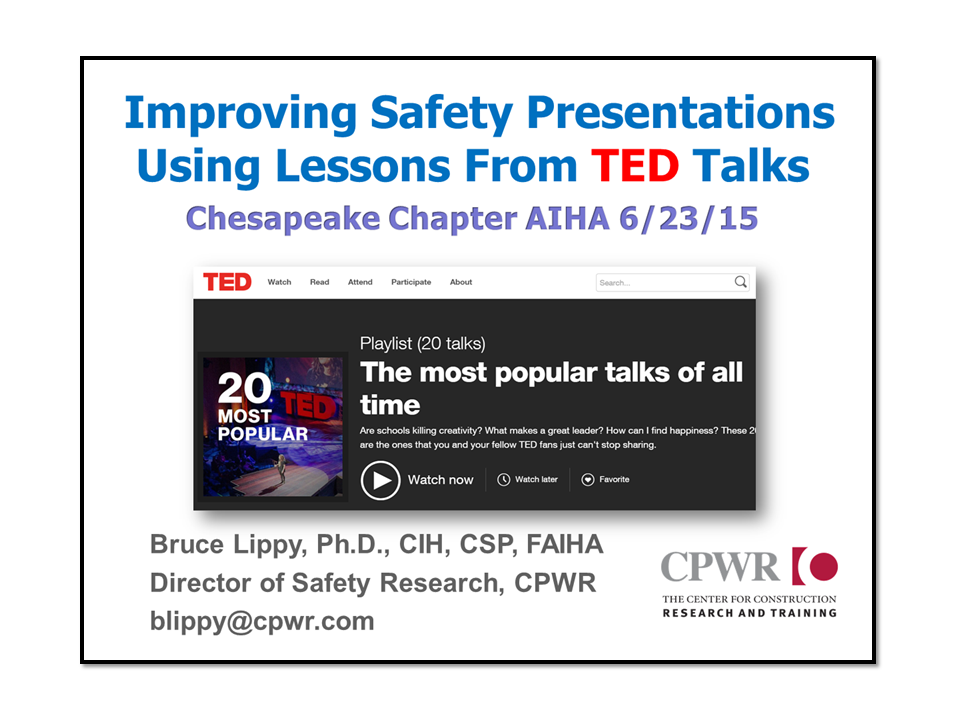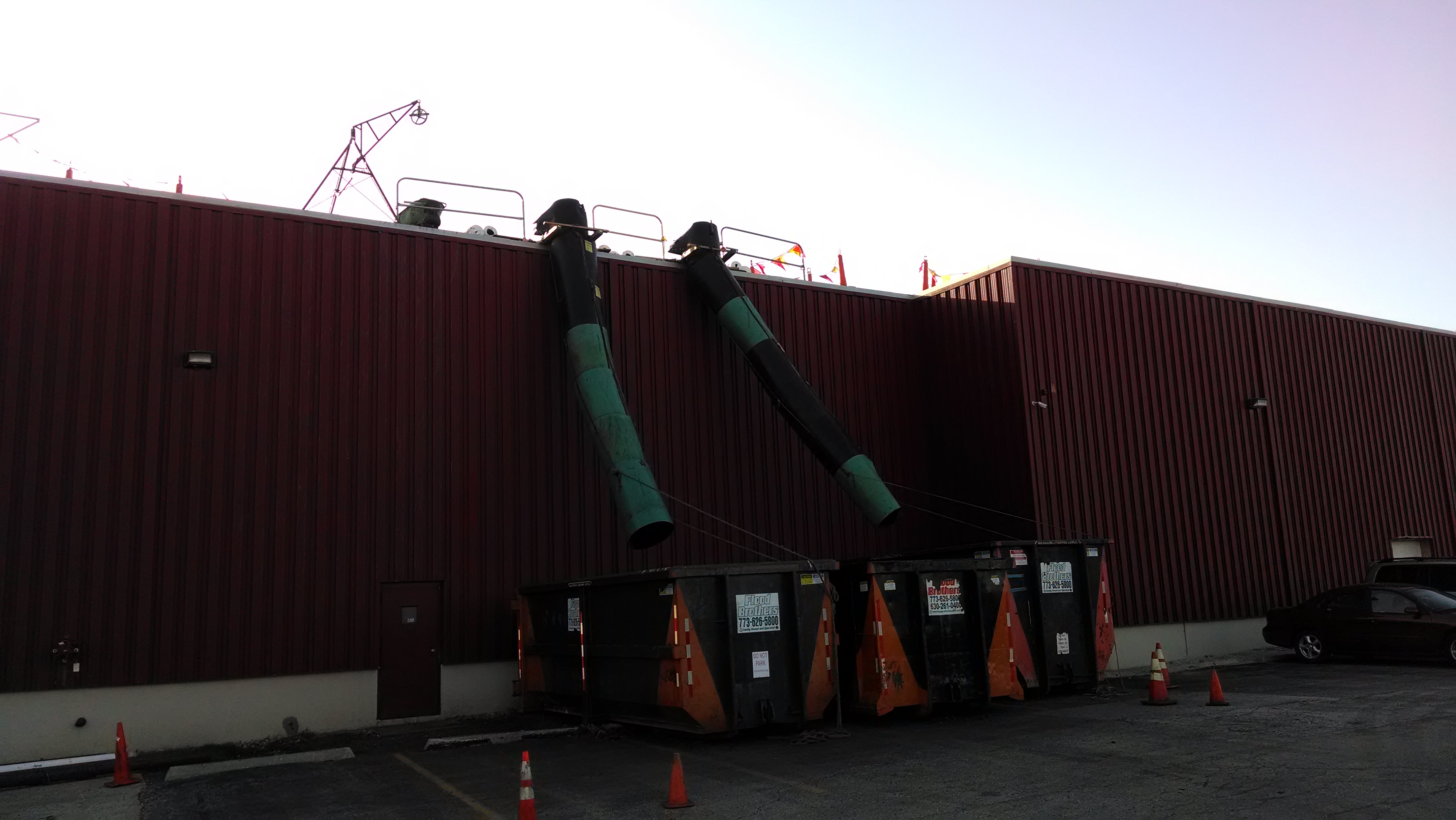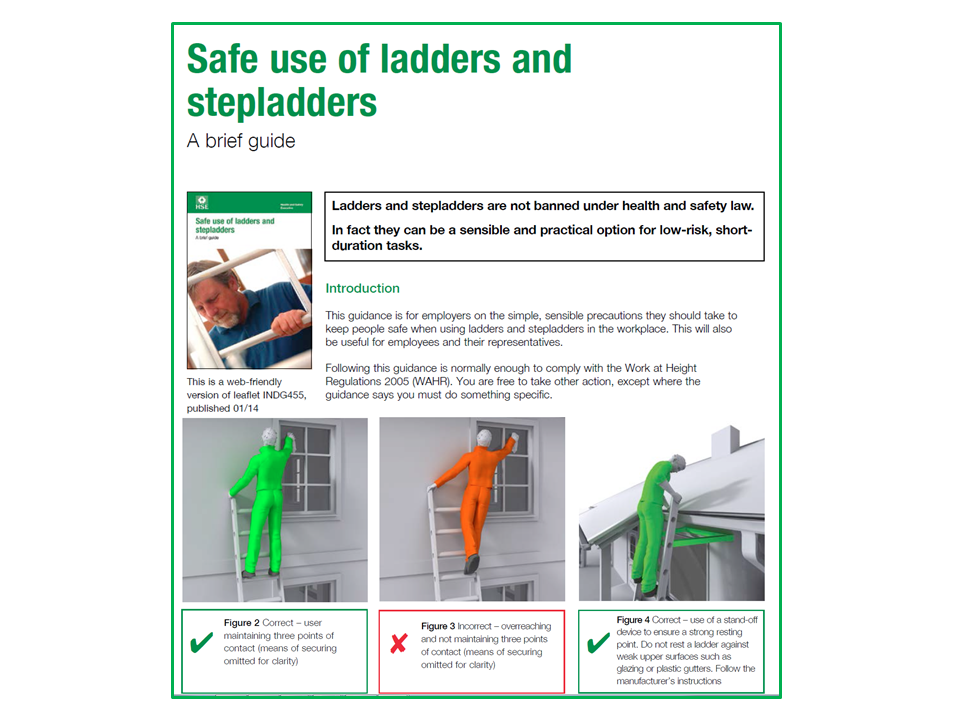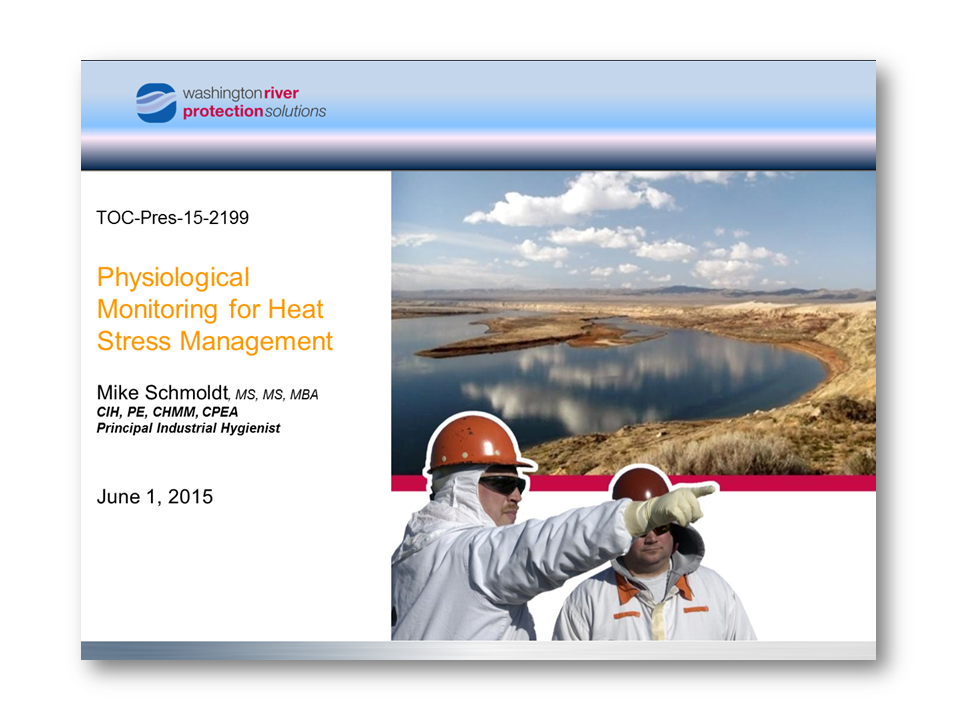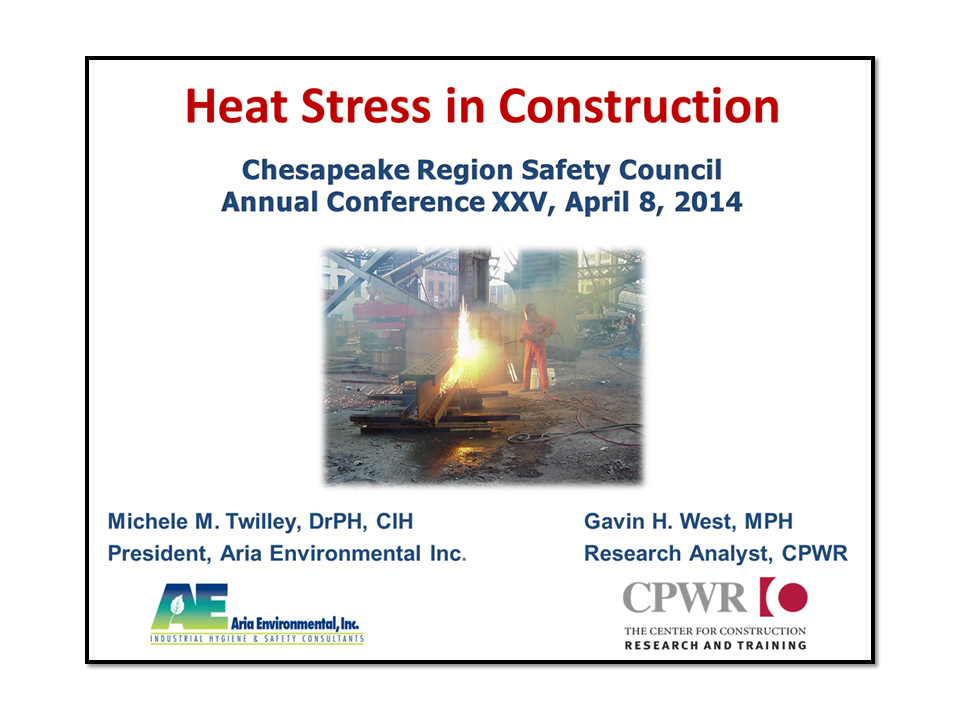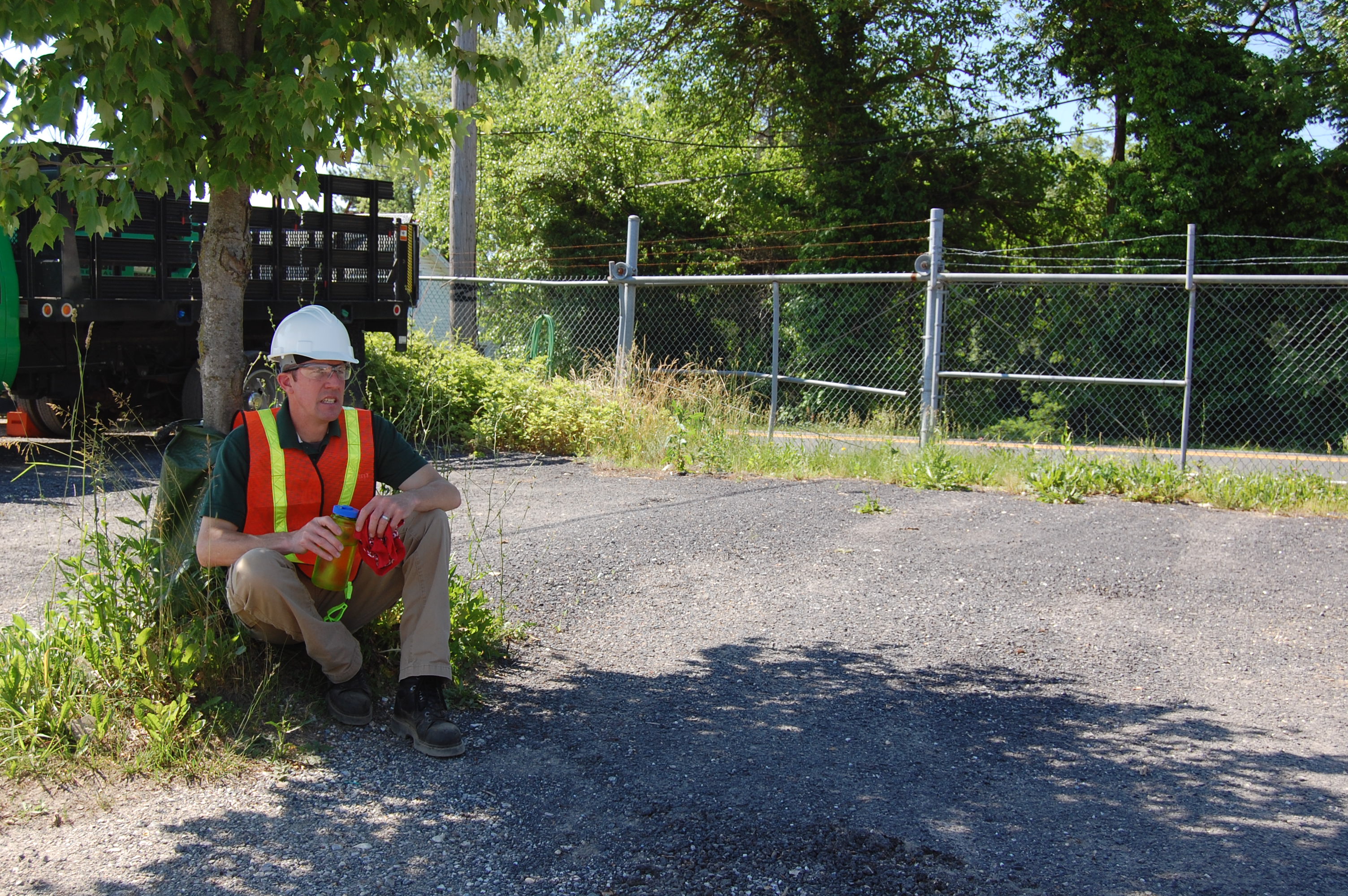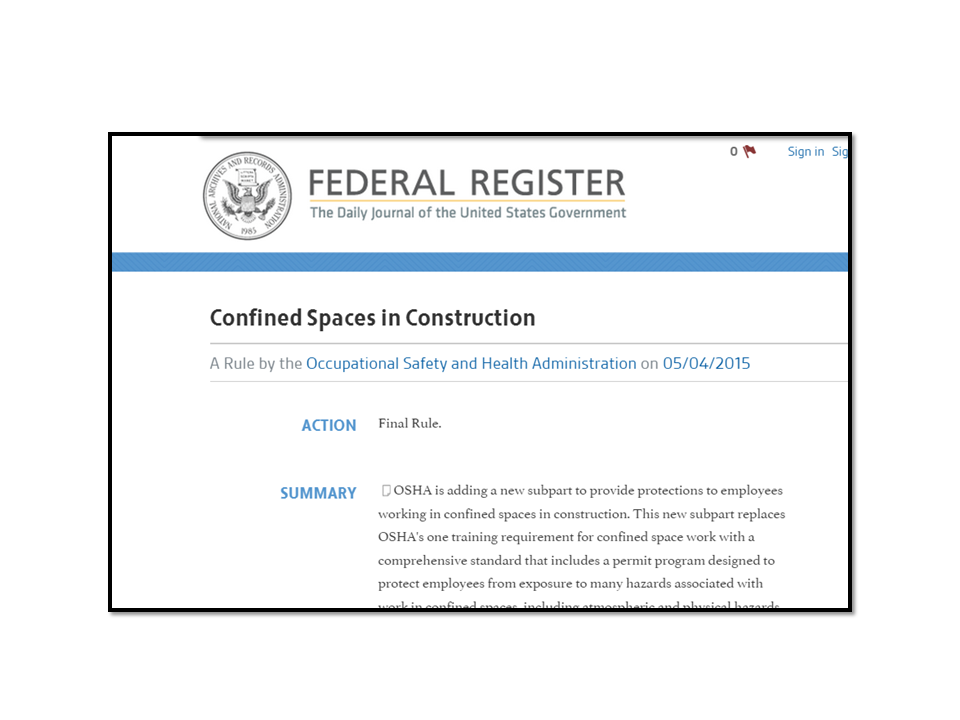Search Results
This NYCOSH fact sheet is adapted for workers and unions primarily from OSHA’s Legionnaires E-Tool: https://www.osha.gov/dts/osta/otm/legionnaires/....
This CPWR Hazard Alert on Nanomaterials addresses the emerging issue of Nanomaterials in construction with concern that these extremely small and haza...
This NIOSH guidance recommends practical actions to reduce the risks of silica-related diseases when cutting fiber-cement siding, which can contains a...
This presentation to the Chesapeake Chapter of the American Industrial Hygiene Association on June 23, 2015 by Bruce Lippy draws lessons for safety tr...
Roofing debris chutes are required at 20 feet. A good chute will have guardrail protection so that the worker is protected from falling off the edge....
This guidance from the British Health and Safety Executive was designed for employers to safely use ladders and stepladders, but should also be useful...
Michael's Schmoldt's PowerPoint, presented at the AIHA Conference on June 1, 2015 in Salt Lake City, outlines a physiological monitoring program to pr...
This presentation was given by Dr. Michele Twilley and Gavin West, MPH at the Chesapeake Region Safety Council's Annual Conference, April 8, 2014. The...
OSHA emphasizes the importance of shade in reducing the risk of heat-related illnesses. Cheap canopies are available to provide shade if no natural sh...
OSHA is adding a new subpart to provide protections to employees working in confined spaces in construction. This new subpart replaces OSHA's one trai...


